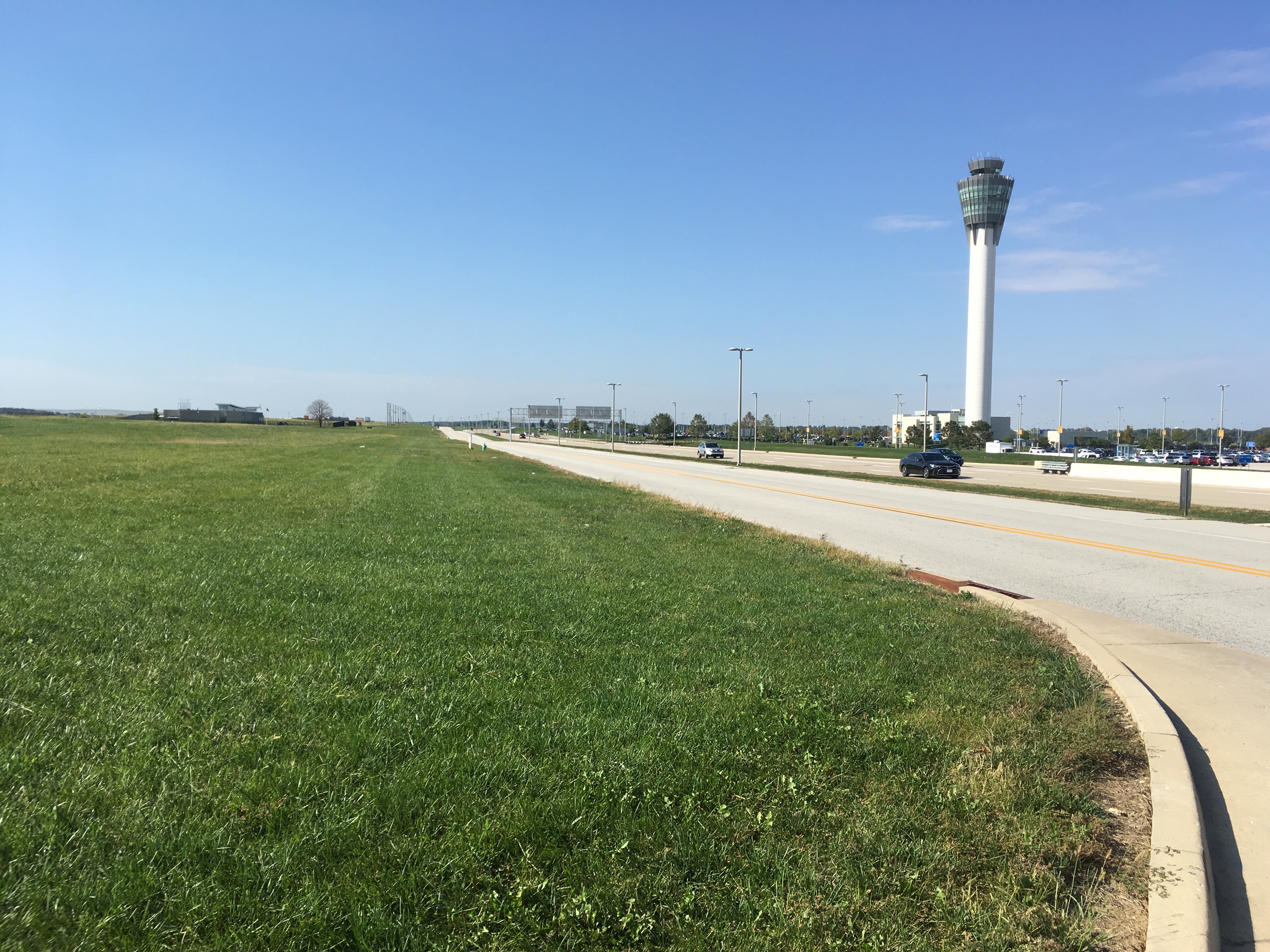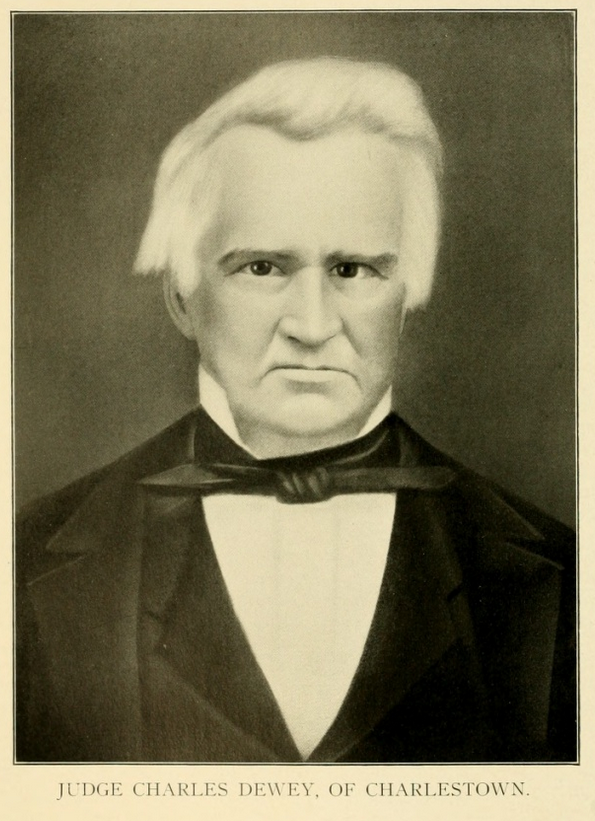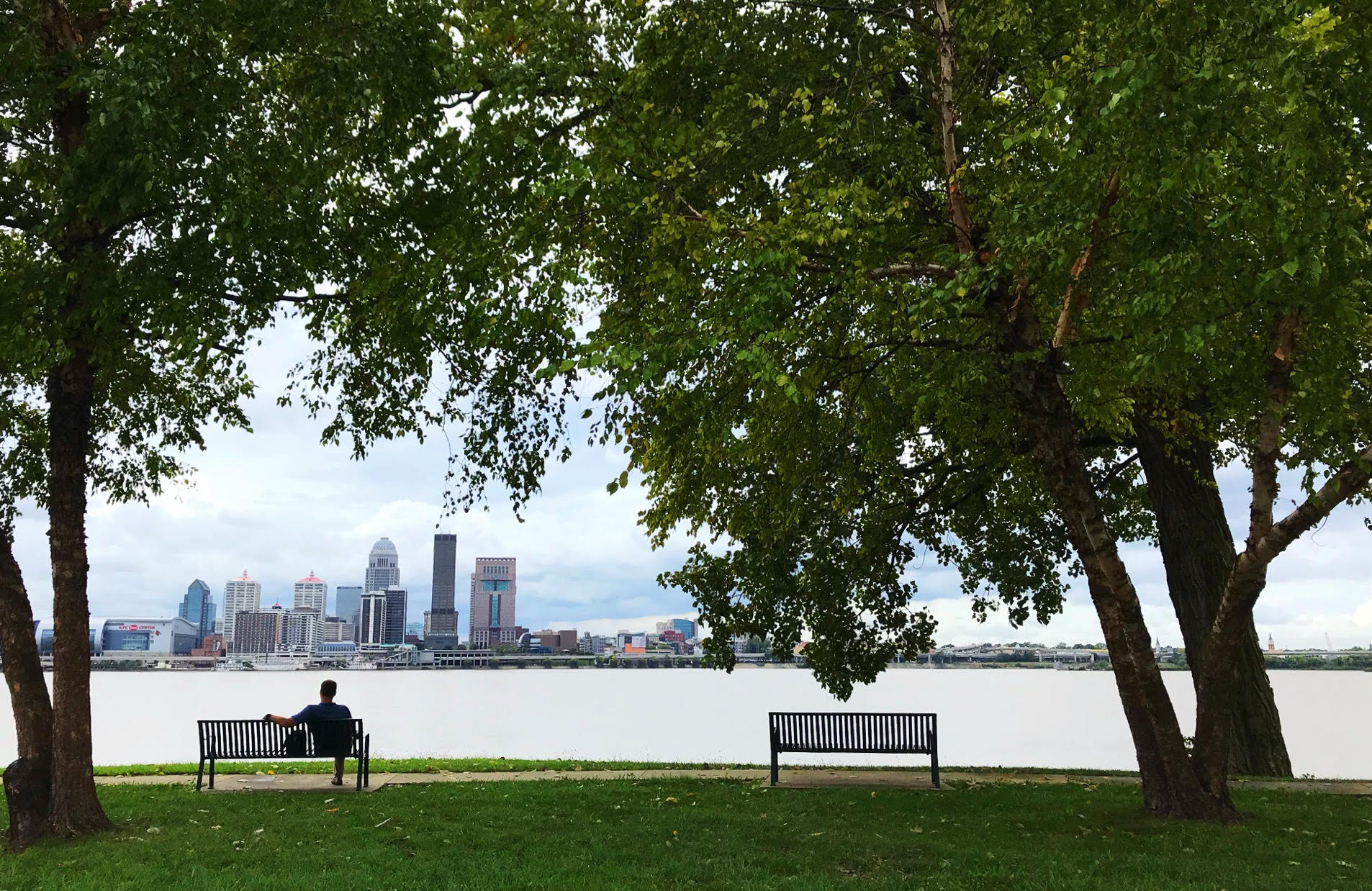|
James Morrison (Indiana Politician)
James Morrison (1796 - March 20, 1869) was an American politician, lawyer, and judge who served as the third Secretary of State of Indiana (1829-1833) and as the first Indiana Attorney General (1855-1856). Biography Morrison was born in 1796 in Ayrshire, Scotland, Great Britain. He had two brothers, William H. and Alexander F. Morrison. At a young age, Morrison traveled with his parents to the United States, settling in Bath, New York. There, he received a short elementary school education and read law with a local judge, William B. Rochester. After being admitted to the bar, Morrison moved to Indiana with his brothers, settling in Charlestown, Clark County. Morrison practiced law there for a decade with Charles Dewey, who later became a Justice of the Indiana Supreme Court. In 1828, Morrison was elected Secretary of State of Indiana, succeeding William W. Wick. Upon his election, Morrison and his brothers moved permanently from Charlestown to Indianapolis. Morrison held th ... [...More Info...] [...Related Items...] OR: [Wikipedia] [Google] [Baidu] |
Secretary Of State Of Indiana
The Secretary of State of Indiana is one of five constitutional officers originally designated in Indiana's State Constitution of 1816. Since 1851, it has been an elected position. The Secretary of State oversees four divisions, and is the third highest constitutional office of the state government. The Secretary serves as the State's chief election officer, enforces state securities regulations, regulates automobile dealerships in Indiana, and manages the state business services division. The current office holder is Holli Sullivan, who was appointed by Governor Eric Holcomb to serve out the term of former Secretary of State Connie Lawson, who announced in February 2021 that she planned on resigning from office. The annual salary of the Secretary of State of Indiana is $74,580. Qualifications and term limits The Indiana Secretary of State is a constitutional office first established in the 1816 Constitution of Indiana. Between 1816 and until 1851, the Secretary of State was nom ... [...More Info...] [...Related Items...] OR: [Wikipedia] [Google] [Baidu] |
Bath, New York
Bath is a town in Steuben County, New York, United States, with an area of 96.3 square miles (249 km2) and a population of 11,426 in 2020. Its largest settlement is the Village of Bath, which has an area of 2.9 sq mi (7.5 km2) and a population of 5,641 (in 2000). The Village is the county seat of Steuben County. The Town is located in the central part of the county, northwest of Elmira. The town and village are either named after the city of Bath in England or after Lady Bath, daughter of a landowner. History The town was founded in 1793 and was part of a land investment by wealthy Briton William Pulteney, and named after Bath, Somerset in England, where he owned extensive estates. It was created along with Steuben County in 1796 and became a mother town of the county, eventually yielding land to seven later towns. The Lackawanna Railroad opened its mainline through Bath, and opened a station, in 1882. Geography The United States Census Bureau lists the town's total are ... [...More Info...] [...Related Items...] OR: [Wikipedia] [Google] [Baidu] |
Marion County, Indiana
Marion County is located in the U.S. state of Indiana. The 2020 United States census, 2020 United States census reported a population of 977,203, making it the largest county in the state and 51st List of the most populous counties in the United States, most populated county in the country. Indianapolis is the county seat, the List of capitals in the United States, state capital, and List of United States cities by population, largest city. Marion County is Consolidated city–county, consolidated with Indianapolis through an arrangement known as Unigov. Marion County is the central county of the Indianapolis metropolitan area, Indianapolis–Carmel–Anderson Metropolitan Statistical Area, MSA in Central Indiana. Geography The low rolling hills of Marion County have been cleared of trees, and the area is completely devoted to municipal development or to agriculture, except for wooded drainages. The highest point (920 feet/279 meters ASL) is a small ridge at the county's northwe ... [...More Info...] [...Related Items...] OR: [Wikipedia] [Google] [Baidu] |
Whig Party (United States)
The Whig Party was a political party in the United States during the middle of the 19th century. Alongside the slightly larger Democratic Party, it was one of the two major parties in the United States between the late 1830s and the early 1850s as part of the Second Party System. Four presidents were affiliated with the Whig Party for at least part of their terms. Other prominent members of the Whig Party include Henry Clay, Daniel Webster, Rufus Choate, William Seward, John J. Crittenden, and John Quincy Adams. The Whig base of support was centered among entrepreneurs, professionals, planters, social reformers, devout Protestants, and the emerging urban middle class. It had much less backing from poor farmers and unskilled workers. The party was critical of Manifest Destiny, territorial expansion into Texas and the Southwest, and the Mexican-American War. It disliked strong presidential power as exhibited by Jackson and Polk, and preferred Congressional dominance in lawma ... [...More Info...] [...Related Items...] OR: [Wikipedia] [Google] [Baidu] |
Independent Politician
An independent or non-partisan politician is a politician not affiliated with any political party or bureaucratic association. There are numerous reasons why someone may stand for office as an independent. Some politicians have political views that do not align with the platforms of any political party, and therefore choose not to affiliate with them. Some independent politicians may be associated with a party, perhaps as former members of it, or else have views that align with it, but choose not to stand in its name, or are unable to do so because the party in question has selected another candidate. Others may belong to or support a political party at the national level but believe they should not formally represent it (and thus be subject to its policies) at another level. In running for public office, independents sometimes choose to form a party or alliance with other independents, and may formally register their party or alliance. Even where the word "independent" is used, s ... [...More Info...] [...Related Items...] OR: [Wikipedia] [Google] [Baidu] |
Governor Of Indiana
The governor of Indiana is the head of government of the State of Indiana. The governor is elected to a four-year term and is responsible for overseeing the day-to-day management of the functions of many agencies of the Indiana state government. The governor also shares power with other statewide executive officers, who manage other state government agencies. The governor works out of the Indiana Statehouse and holds official functions at the Indiana Governor's Residence in the state capital of Indianapolis. The 51st, and current, governor is Republican Eric Holcomb, who took office on January 9, 2017. The position of the governor has developed over the course of two centuries. It has become considerably more powerful since the mid-20th century after decades of struggle with the Indiana General Assembly and Indiana Supreme Court to establish the executive branch of the government as an equal third branch of the state government. Although gubernatorial powers were again signifi ... [...More Info...] [...Related Items...] OR: [Wikipedia] [Google] [Baidu] |
Indianapolis
Indianapolis (), colloquially known as Indy, is the state capital and most populous city of the U.S. state of Indiana and the seat of Marion County. According to the U.S. Census Bureau, the consolidated population of Indianapolis and Marion County was 977,203 in 2020. The "balance" population, which excludes semi-autonomous municipalities in Marion County, was 887,642. It is the 15th most populous city in the U.S., the third-most populous city in the Midwest, after Chicago and Columbus, Ohio, and the fourth-most populous state capital after Phoenix, Arizona, Austin, Texas, and Columbus. The Indianapolis metropolitan area is the 33rd most populous metropolitan statistical area in the U.S., with 2,111,040 residents. Its combined statistical area ranks 28th, with a population of 2,431,361. Indianapolis covers , making it the 18th largest city by land area in the U.S. Indigenous peoples inhabited the area dating to as early as 10,000 BC. In 1818, the Lenape relinquished their ... [...More Info...] [...Related Items...] OR: [Wikipedia] [Google] [Baidu] |
Indiana Supreme Court
The Indiana Supreme Court, established by Article 7 of the Indiana Constitution, is the highest judicial authority in the state of Indiana. Located in Indianapolis, Indiana, Indianapolis, the Court's chambers are in the north wing of the Indiana State House, Indiana Statehouse. In December 1816, the Indiana Supreme Court succeeded the General Court of the Indiana Territory as the state's high court. During its long history the Court has heard a number of high-profile cases, including ''Polly Strong#Lasselle v. State, Lasselle v. State'' (1820). Originally begun as a three-member judicial panel, the Court underwent major reforms in 1852 and 1971, as well as several other reorganizations. Court reforms led to a majority of Supreme Court cases being delegated to lower courts, an enlarged panel of justices, and employment of a large staff to assist as its caseload increases. Organization and jurisdiction In 2008, the Court consisted of one chief justice and four associate justic ... [...More Info...] [...Related Items...] OR: [Wikipedia] [Google] [Baidu] |
Charles Dewey (Indiana Judge)
Charles Dewey (March 6, 1784 – April 25, 1862) was a justice of the Indiana Supreme Court from May 30, 1836, to January 29, 1847. Born in Sheffield, Massachusetts,Minde C. Browning, Richard Humphrey, and Bruce Kleinschmidt,Biographical Sketches of Indiana Supreme Court Justices, ''Indiana Law Review'', Vol. 30, No. 1 (1997), section reproduced iIndiana Courts Justice Biographies page Dewey moved to Indiana "at an early day in its history"."Death of Judge Dewey", ''Richmond Weekly Palladium'' (May 10, 1862), p. 3. Dewey attended Williams College, and received an honorary LL.D. from Indiana University. He became a leading lawyer in private practice in the state prior to his appointment to the state supreme court. Following his retirement from the bench, Dewey returned to private practice, though he was not thereafter active in public affairs. After breaking his leg in a fall in his early seventies, Dewey largely withdrew from practice. He died at his home in Charlestown, Indiana ... [...More Info...] [...Related Items...] OR: [Wikipedia] [Google] [Baidu] |
Clark County, Indiana
Clark County is a county in the U.S. state of Indiana, located directly across the Ohio River from Louisville, Kentucky. At the 2020 census, the population was 121,093. The county seat is Jeffersonville. Clark County is part of the Louisville/Jefferson County, KY–IN Metropolitan Statistical Area. History Clark County lies on the north bank of the Ohio River. A significant gateway to the state of Indiana, Clark County's settlement began in 1783. The state of Virginia rewarded General George Rogers Clark and his regiment for their victorious capture of Forts Kaskaskia, Cahokia, and Vincennes from the British, by granting them of land. A small portion of this land, , became known as Clarksville, the first authorized American settlement in the Northwest Territory, founded the next year in 1784. Clark County Genealogical Records (accessed 21 January ... [...More Info...] [...Related Items...] OR: [Wikipedia] [Google] [Baidu] |
Charlestown, Indiana
Charlestown is a city located within Charlestown Township, in Clark County, Indiana, United States. The population was 7,775 at the 2020 census. History Charlestown was established in 1808, named after one of its surveyors, Charles Beggs, upon , of which was designated for a town square. It was established one mile (1.6 km) northeast of Springville, and was responsible for Springville's demise. Milling was important to the town, as the first mill was built in the area, on Fourteen Mile Creek, in 1804. This mill would be abandoned when John Work built a mill by use of a tunnel in 1814. Today, that mill is part of the Tunnel Mill Scout Reservation. From 1811 to 1878 Charlestown was the county seat of Clark County, but as Jeffersonville had surpassed it economically, the county seat reverted to Jeffersonville in 1878. In 1818 the first Grand Lodge of Free & Accepted Masons in Indiana met in Charlestown, due to Jonathan Jennings' influence. In 1940 the population of Cha ... [...More Info...] [...Related Items...] OR: [Wikipedia] [Google] [Baidu] |









